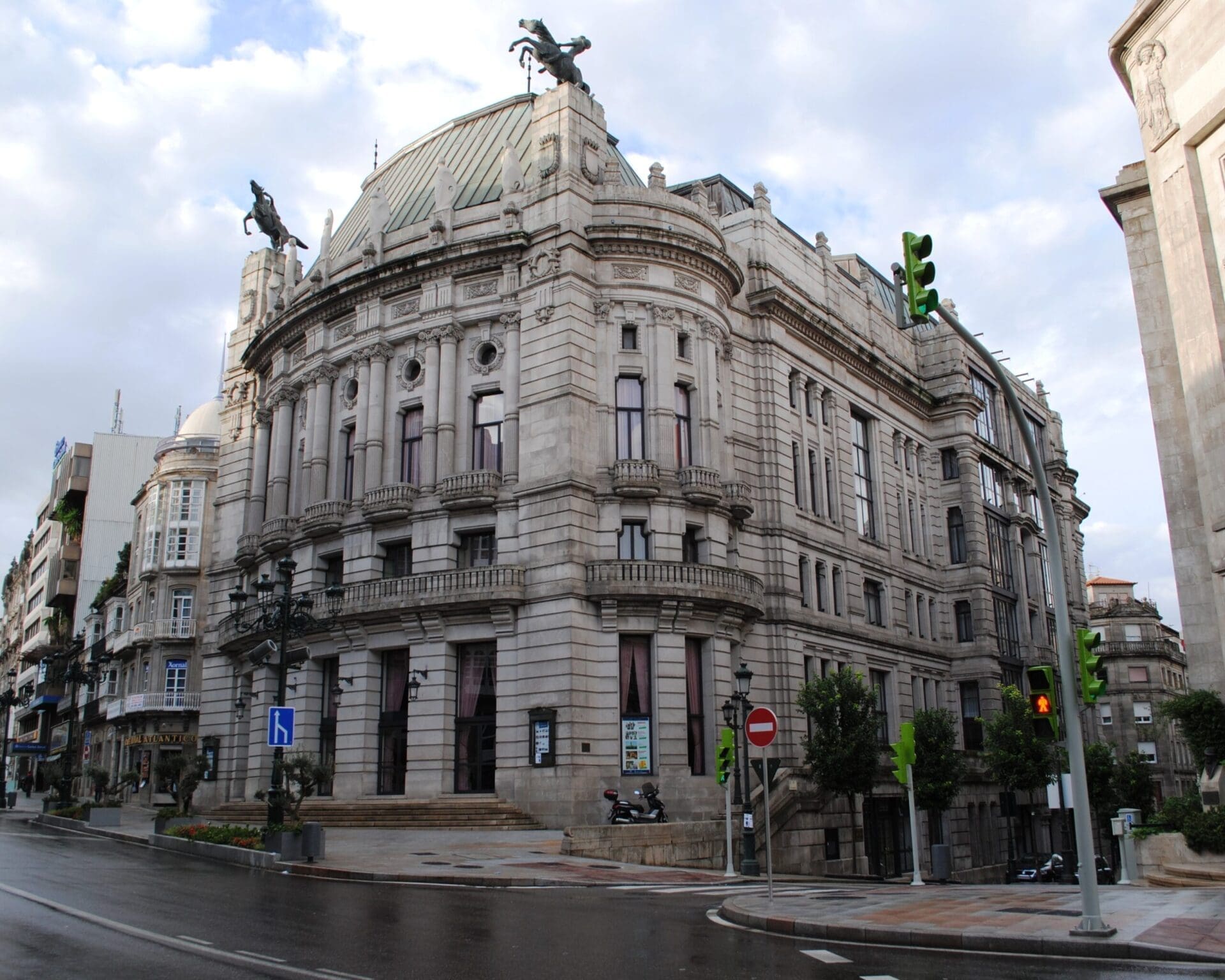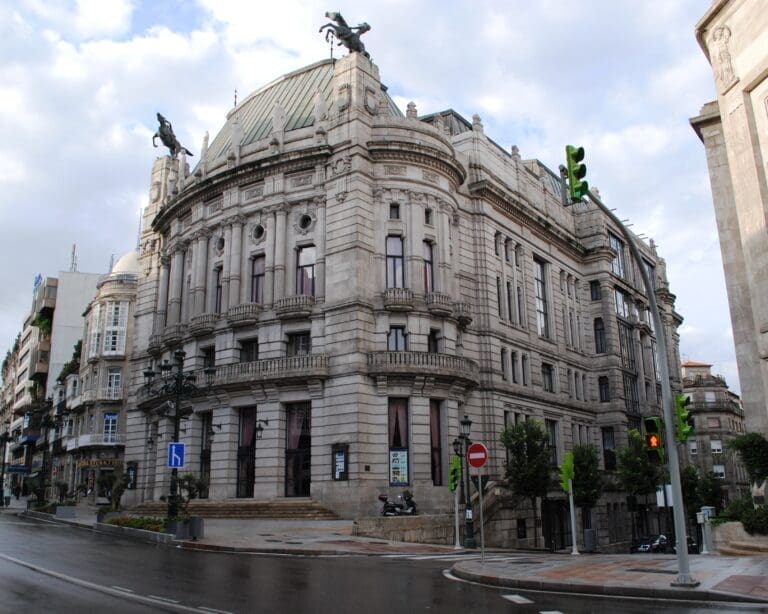It is one of the most emblematic architectural works of the city. The current building is the result of the reconstruction of the old Rosalía de Castro theater, which burned down in 1910 when a carnival ball was being held.
To prevent the theater from being lost, the family of the philanthropist José García Barbón commissioned the architect Antonio Palacios to design a monumental building that integrates various functions such as cinema, casino and theater.
On the first floor, the main foyer, the staircase of honor and the circular theater room would be located. In the lower part of the building, taking advantage of the unevenness of the site, there was a cinema and a space for a restaurant. Today, part of this interior distribution has changed and the building currently has a theater-concert hall -with a capacity for 994 people-, an auditorium with 475 seats, seminar rooms, a library…
In terms of architecture, it is worth mentioning the main façade in which we can observe influences from Charles Garnier’s Paris Opera House and the Arriaga Theater in Bilbao, reflected in the curved treatment of the façade or in its separation into three sections by means of large buttresses. In the lateral facades, a greater formal rigor and a greater ornamental restriction can be observed, highlighting the large glazed surface of the two lateral facades.
The entire building was restored by the architect Desiderio Pernas between 1982 and 1984, after being acquired by the financial institution Caixanova to convert it into a cultural center. It was covered with a copper roof to house the library; the sculptures of the bronze horses by Juan Oliveira were placed on the main façade pillars, and the rest of the stone figures by Manuel Buciños allegorical to painting, theater, sculpture, literature, cinema and music. It was inaugurated on March 22, 1984.

 Vigo, Galicia
Vigo, Galicia




 Teatro García Barbón
Teatro García Barbón 



